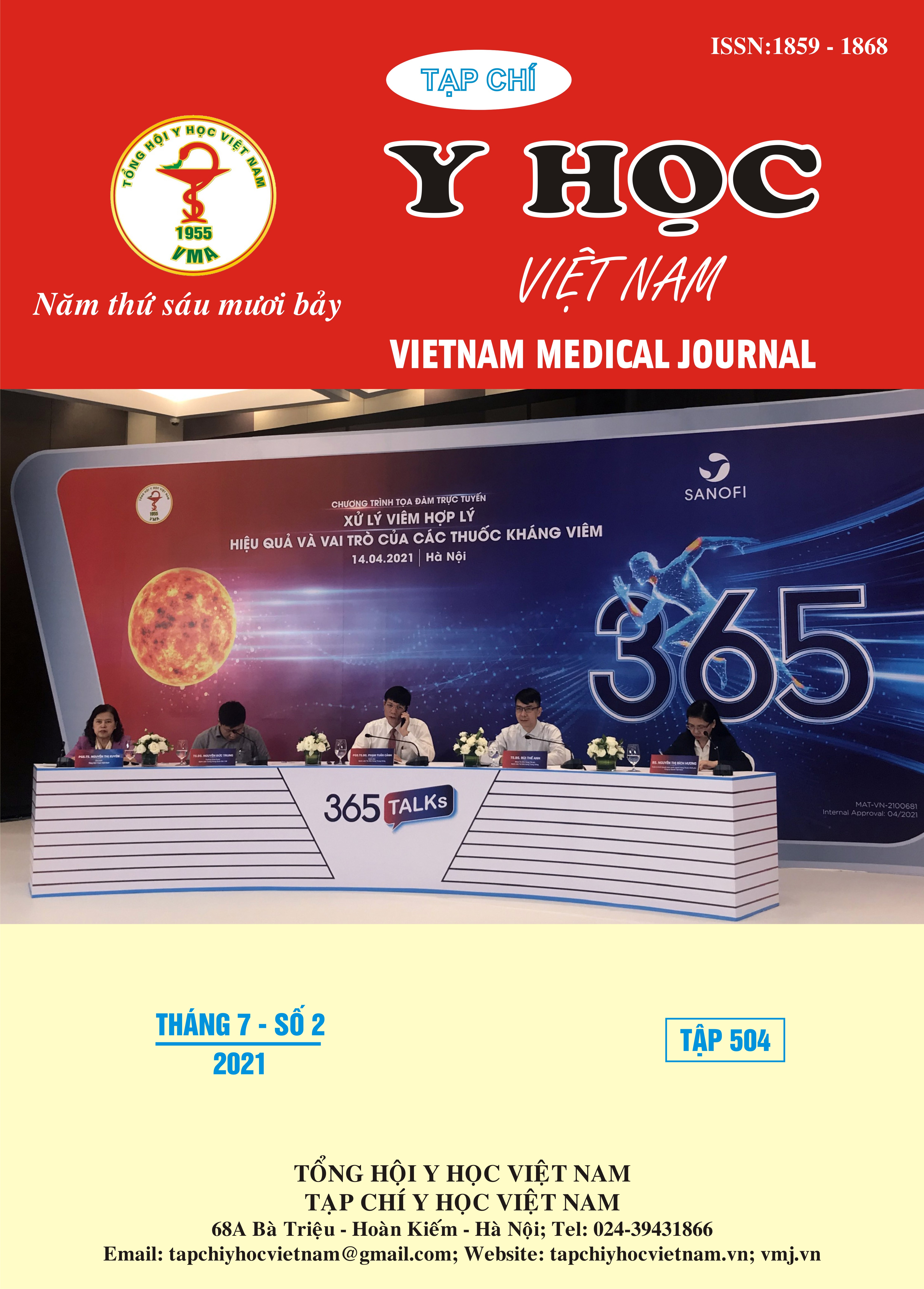CLINICAL, SUBCLINICAL FEATURES AND TREAMENT SITUATION OF RHEUMATOID ARTHRITIS PATIENTS AT NGHE AN FRIENDSHIP GENERAL HOSPITAL
Main Article Content
Abstract
Objective: To describe the clinical, subclinical features and treatment situation of patients with rheumatoid arthritis at the rheumatology Department of Nghe An friendship general Hospital. Methods: The cross-sectional, descriptive study was conducted on 103 patients with rheumatoid arthritis at the rheumatology Department of Nghe An friendship general Hospital. Results: Females account for 89,32% and 45,63% of patients are aged from 30 to 59 years old; The most common joint site of inflammation onset is the wrist, hand and finger joints (47,57%); 85,44% of patients have morning joint stiffness that was greater than 1h; 87,38% of the patients had a strong level of disease activity; 91,26% of patients had an increased erythrocyte sedimentation rate and 97,07% of patients had a positive CRP; 54.37% of patients have anemia; 87,38% of patients have positive RF test and 91.67% have high positive anti-CCP test; 53.40% of patients have stage 2 lesions on x-ray; 46,22% of patients did not adhere to regular treatment and only 8,74% of patients were treated with biologic drugs. Conclusion: The study showed some clinical and subclinical characteristics of patients with rheumatoid arthritis at the rheumatology Department of Nghe An friendship general Hospital. There are 87,38% of patients who had the strong level of disease activity according to DAS scale. There were 46,22% of patients who did not adhere to regular treatment and only 8,74% of patients were treated with biological drugs.
Article Details
Keywords
Clinical, subclinical, treatment, rheumatoid arthritis
References
2. Đỗ Thị Diệu Hằng (2018), “Phân tích đặc điểm sử dụng thuốc trong điều trị VKDT tại khoa Nội thận – Cơ Xương Khớp Bệnh viện Trung ương Huế”, Đại học Dược Hà Nội.
3. Lê Thị Liễu (2008), “Nghiên cứu các giai đoạn tiến triển của bệnh viêm khớp dạng thấp qua lâm sàng và siêu âm khớp cổ tay”, Đại học Y Hà Nội.
4. Trường Đại học Y Hà Nội (2018), “Bệnh học Nội khoa”, Nhà xuất bản Y học; tr. 105–120.
5. Trần Thị Hải Yến (2014), “Nghiên cứu nồng độ kháng thể anti CCP huyết thanh ở bệnh nhân viêm khớp dạng thấp ở Thái Nguyên”, Đại học Y Dược Thái Nguyên.
6. Aletaha D., Smolen JS. (2018), “Diagnosis and Management of Rheumatoid Arthritis: A Review”, JAMA, 320(13): pp.1360–72.
7. Afzal N., Karim S., Mahmud T-H., Sami W., Arif M., Abbas S. (2011), “Evaluation of anti-CCP antibody for diagnosis of rheumatoid arthritis”, Clin Lab,57(11–12); pp.895–9.
8. Backhaus M., Burmester G.R., Gerber T., Grassi W., Machold K.P., Swen W.A., et al (2021), “Guidelines for musculoskeletal ultrasound in rheumatology”, Ann Rheum Dis, 60(7); pp. 641–9.
9. Khalid A., Johannes N., David P. (2021), “The global prevalence of rheumatoid arthritis: a meta-analysis based on a systematic review”, Rheumatol Int, 41; pp.863–77.


